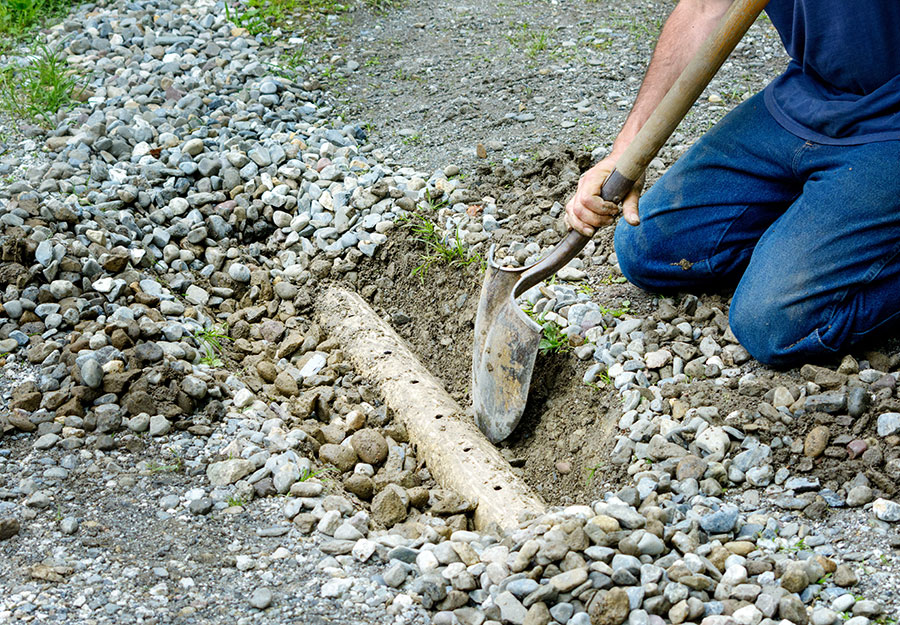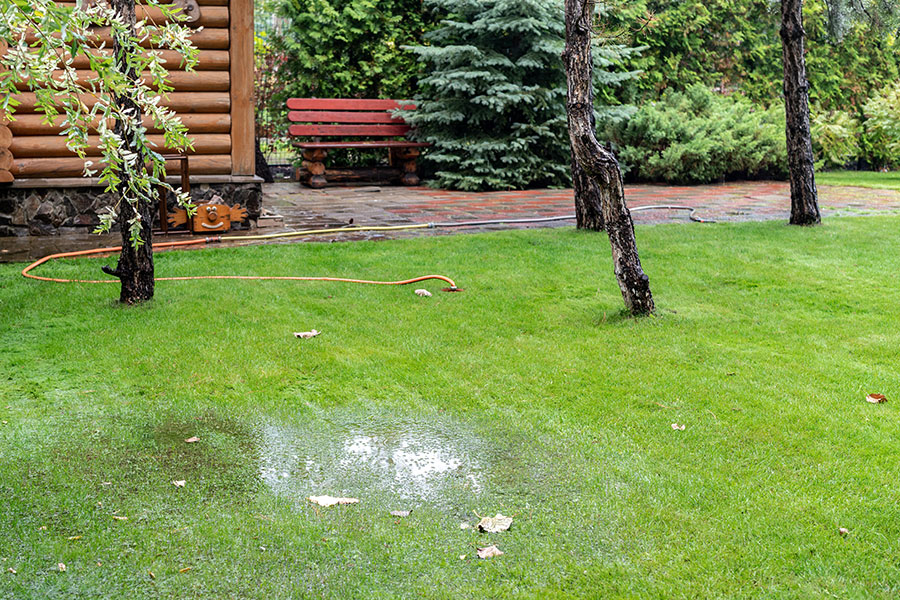Have you suddenly noticed alarming telltale signs of backyard drainage problems? Muddy areas, puddles of water, a soggy lawn and mosquitoes are all clues water in your yards is not draining as it should.
Although most signs of drainage problems are painfully obvious, sometimes they are not fixed for a while. That’s a big mistake since drainage problems can worsen if not corrected. Your grass and plants may die, water can seep into your basement or subflooring, and muddy footprints and mosquitoes can find their way mud into your home. None of it is good.
Luckily, you have options. You can fix poor backyard drainage yourself or ask an expert for help. These steps can help you decide what to do:
Identify the Problem
Finding a likely reason for your drainage problem can help you determine the best course of action to take. Here are several common causes for water that doesn’t drain properly.
- Inappropriate slope. The slope of your yard does not direct water away from your home.
- Short or misdirected downspouts. Water collects in areas with no means of escape.
- Compacted soil. Hardened soil retains moisture and eventually cannot drain.
- Hardscape positioning. Walkways, paths, and other features can block water runoff.
- Soil erosion. Water, weather, and movement can eliminate, reduce or move topsoil and lead to water pooling in eroded or sunken areas.
Modify Your Watering Schedule
A fast and free way to resolve drainage difficulties in the summer is to look at your watering habits. Watering for shorter periods or less often may fix the problematic areas.
Manage the Downspouts

Extending or redirecting downspouts to a different area is an excellent way to divert water away from your house or basins in your yard. Since downspouts are part of your gutter system, you may also want to inspect the gutters to ensure they are working correctly. Clogged or broken gutters can channel overflow water to places you don’t want it to go.
Create a Swale or Creek Bed
You can use both swales and creek beds to manage or redirect water effectively. Creating a swale or creek bed allows you to collect overflow water and then slowly release it into your landscaping, storm drains or anywhere else. To build a swale, all you need to do is dig a shallow drainage ditch, line it with gravel or stones, and your project is complete.
Constructing an attractive creek bed is similar. Just dig a shallow ditch, line it with gravel or stones, but then add attractive landscaping features such as boulders, plants, and garden art. Swales and creekbeds can add to the beauty of your yards, whether wet or dry.
Install Underground Pipes and French Drains

Adding solid underground pipes and perforated French drainage pipes are two effective ways to handle drainage problems. However, both strategies involve several obstacles if you decide to do it yourself. You will need to dig ditches deep enough to bury the pipes, with a French drain requiring trenches 18 inches deep and 12 inches wide.
Before starting your backyard drainage project, you must contact city officials to ensure you don’t touch buried utility lines. You will also need to determine how much slope is necessary and where to place the pipes to achieve drainage. In addition, topsoil weighs approximately 100 pounds for every cubic foot, so both projects are labor-intensive.
Many homeowners turn to professional plumbers and foundation or excavation companies for help with underground pipes and French drains. If you decide to hire professionals to do the job, be sure to get an estimate that includes all costs, including labor, materials and parts. The estimate should also include the price of filling the trench after pipe installation and hauling away any unwanted soil.
Fixing backyard drainage problems is worth the effort. Not only will your home benefit, but you will sleep better at night.

